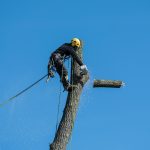Meeting UK Legal Requirements for High-Rise Fire Safety
Understanding UK fire safety regulations is crucial for anyone managing or residing in high-rise buildings. Central to compliance is the Building Safety Act, which intensifies legal obligations, especially following past tragic fire events. This act mandates enhanced safety standards, increased transparency, and stronger accountability for building owners and managers.
Under the Building Safety Act and the Fire Safety Order, those responsible must conduct rigorous fire risk assessments and ensure that fire safety measures align with the latest regulatory requirements. Failure to comply can result in severe penalties and jeopardise resident safety. Legal obligations also extend to maintaining common areas, managing escape routes, and ensuring fire detection systems are fully operational.
Have you seen this : Designing a welcoming guest room in the uk: a comprehensive guide to accommodating various accessibility needs
Applying these laws to high-rise residential buildings means adopting a proactive approach. Building owners must regularly review and upgrade fire safety infrastructure and document all compliance activities meticulously. Clear responsibilities must be allocated, and a culture of safety should be embedded throughout the building management and resident community. This approach ensures not only legal compliance but also a safer environment for all occupants.
Planning and Implementing a Comprehensive Fire Safety Strategy
Developing a robust fire safety strategy starts with conducting detailed fire risk assessments tailored to the unique challenges of high-rise buildings. These assessments identify hazards, evaluate risks to occupants, and determine the effectiveness of existing safety measures. Understanding the specific layout, materials, and occupancy patterns of a high-rise is essential to highlight potential fire hazards early.
Also read : Wedding flowers bath: stunning floral arrangements for your big day
The next step involves formulating a comprehensive fire safety plan. This plan should define clear actions for prevention, detection, containment, and evacuation. It integrates regular inspections, maintenance schedules, and upgrades to fire safety equipment. Importantly, embedding resident engagement is critical; involving occupants in fire safety drills and training encourages cooperation and heightens emergency preparedness.
High-rise fire safety planning must prioritize seamless communication channels. These enable efficient coordination during emergencies, ensuring that all residents receive timely instructions. Combining structured risk assessments with interactive resident involvement strengthens the strategy, creating a safer living environment while fulfilling legal obligations under UK fire safety regulations. This proactive and systematic approach also supports compliance with the Building Safety Act, aligning with its emphasis on resident safety and accountability.
Meeting UK Legal Requirements for High-Rise Fire Safety
The Building Safety Act is pivotal in shaping UK fire safety regulations for high-rise buildings. It intensifies legal obligations by establishing stricter accountability standards for building owners and managers. Unlike prior legislation, it demands more detailed documentation and transparent reporting to regulators and residents.
Under this act and the Fire Safety Order, responsible persons must ensure continuous compliance by carrying out frequent fire risk assessments and maintaining all fire prevention systems. These include alarms, sprinklers, and emergency lighting. The law also requires managing escape routes meticulously to guarantee safe evacuation if needed.
Applying these legal obligations to high-rise residential buildings means adopting a structured approach. Owners must implement ongoing monitoring and promptly address any identified fire safety issues. This proactive compliance aligns directly with UK fire safety regulations and reduces liability risks. Meeting these requirements is not only a legal necessity but a vital element for safeguarding resident lives in high-rise environments.
Meeting UK Legal Requirements for High-Rise Fire Safety
The Building Safety Act and the Fire Safety Order form the cornerstone of UK fire safety regulations for high-rise buildings. These laws establish clear legal obligations for building owners and managers, requiring stringent compliance to protect residents. Under the Building Safety Act, owners must provide thorough documentation and transparent reporting on fire safety measures. This ensures regulators and occupants are kept informed about building conditions and ongoing safety efforts.
Responsibilities under these regulations include conducting frequent fire risk assessments to identify hazards and mitigate risks promptly. Compliance also mandates that all fire detection, alarm, and suppression systems be fully operational and regularly maintained. Managing escape routes is vital to guarantee safe evacuation during emergencies.
Applying these legal requirements to high-rise residential buildings demands a structured, proactive approach. Owners must implement continuous monitoring and promptly address any fire safety issues. This not only meets compliance standards but also fosters accountability and enhances safety for all residents. Ultimately, understanding and acting on these legal obligations protects lives while aligning with the evolving standards set by UK fire safety regulations.
Meeting UK Legal Requirements for High-Rise Fire Safety
The Building Safety Act and the Fire Safety Order form the legal backbone of UK fire safety regulations concerning high-rise buildings. Recent regulatory changes emphasize enhanced compliance measures and tighter legal obligations for building owners and responsible persons. These laws mandate thorough documentation, regular fire risk assessments, and ongoing monitoring of fire prevention systems including alarms, sprinklers, and emergency lighting.
Under the Building Safety Act, owners must ensure transparent reporting to regulators and occupants, thereby increasing accountability. Responsibilities include maintaining safe evacuation routes and implementing immediate corrective actions when risks are detected. Failure to meet these obligations can lead to significant penalties and endanger resident safety.
Applying these requirements to high-rise residential properties demands a structured and proactive approach. Continuous compliance involves systematic inspections, prompt resolution of identified hazards, and comprehensive record-keeping. By doing so, building managers align with UK fire safety regulations, mitigate liability issues, and, most importantly, protect occupant lives from fire risks inherent in tall structures. This legal framework supports a culture of safety that must be embedded throughout building operations.
Meeting UK Legal Requirements for High-Rise Fire Safety
The Building Safety Act and the Fire Safety Order are fundamental to UK fire safety regulations governing high-rise buildings. These laws strengthen legal obligations for building owners and managers by requiring comprehensive documentation and transparent reporting to both regulators and residents. This transparency is critical to maintain trust and ensure accountability.
Under these regulations, responsible persons must conduct regular, detailed fire risk assessments to identify hazards and evaluate fire safety measures. Compliance entails maintaining all fire detection and suppression systems, such as alarms and sprinklers, in full working order. Safe evacuation routes must also be clearly marked and unobstructed at all times.
Applying these legal obligations to high-rise residential buildings demands a rigorous, ongoing commitment to safety. Owners need to implement continuous monitoring regimes and respond promptly to any identified risks. This approach not only aligns with evolving UK fire safety regulations but also mitigates liability and, crucially, protects residents’ lives. Adhering to the Building Safety Act fosters a proactive fire safety culture that is essential in managing the complex risks present in tall residential structures.
Meeting UK Legal Requirements for High-Rise Fire Safety
The Building Safety Act and the Fire Safety Order establish the framework of UK fire safety regulations that govern high-rise residential buildings. These laws impose stringent legal obligations on building owners and responsible persons to ensure all fire safety measures are robust and consistently enforced. Central responsibilities include conducting regular fire risk assessments aimed at identifying hazards specific to tall structures. These assessments inform ongoing efforts to mitigate risks.
Under the Building Safety Act, owners must maintain thorough documentation and provide transparent reporting to both regulators and residents, promoting accountability. Ensuring compliance extends to maintaining fully operational fire detection and suppression systems—such as alarms and sprinklers—and keeping evacuation routes clear and secure to facilitate safe emergency exit.
Applying these legal obligations to high-rise buildings requires a proactive approach. Continuous monitoring and prompt rectification of identified risks are essential to uphold compliance with the law. This not only reduces liability but importantly protects resident safety, demonstrating adherence to the evolving standards of UK fire safety regulations.










